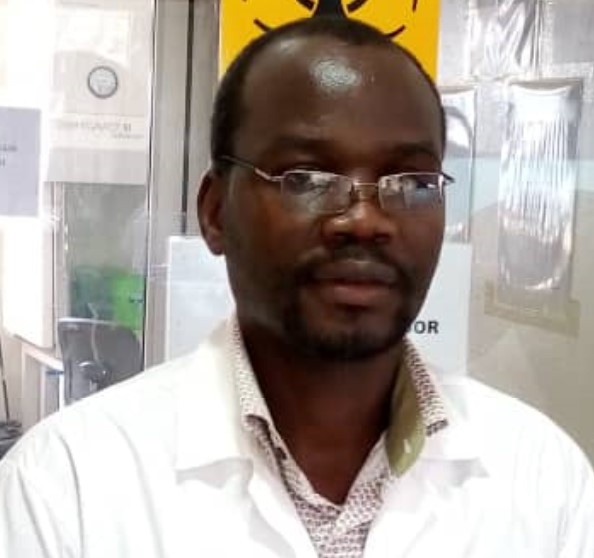Project Title
Hotspots, households and hospitals: targeted drug-resistant tuberculosis case finding in Namibia
EDCTP Project
TMA2018SF-2462
EDCTP Project Call
Senior Fellowship (SF)
Project Objectives
Goal and anticipated outcomes
The long-term goal of the infectious diseases research group at UNAM is to develop a next generation sequencing (NGS) platform, including WGS, for infectious disease pathogens at UNAM SoM as part of the establishment of a Centre of Excellence for clinical, epidemiological and implementation TB research. Sequencing techniques are expected to be the future of antimicrobial resistance surveillance and prediction, but are not yet available for routine use anywhere in Africa. Thus, Namibia could be a model African high burden TB/HIV country, due to its epidemiology, geography and burden of disease. The SoM, together with local partners, could develop a regional service provision and training hub, specializing in sequencing technologies, antimicrobial resistance control and related public health issues.
Anticipated outcomes of the H3TB study include: (i) a formalized collaboration between UNAM and RCB as a first step in establishing a Centre of Excellence, (ii) an improved understanding of the DR-TB epidemic in Namibia, including its transmission pathways and outbreak cycles, (iii) identification of transmission hotspots which will be used for site selection in a targeted case finding feasibility study, (iv) development of a model to evaluate the impact of targeted case finding intervention strategies on DR-TB incidence, and (v) building of local and regional capacity and networks to improve early diagnosis and effective treatment of DR-TB. This information could be used to allocate programmatic resources according to need, i.e. to areas with transmission hotspots, and to design a large-scale intervention study to actively find DR-TB cases.
Study Design
The specific aims of the H3TB study are to: (i) characterise the DR-TB epidemic, in terms of clinical, epidemiological, geospatial, social network and laboratory data, to identify transmission hotspots in three regions of Namibia, (ii) evaluate the feasibility of targeted case finding intervention strategies to improve DR-TB control in highly affected populations and (iii) develop a transmission model to investigate the potential impact of the case finding intervention strategies on DR-TB incidence in Namibia.
We have started with our prospective surveillance study in January 2020, which includes all DR-TB cases in Namibia, and which nests H3TB. Data collection tools and other study implementation tools have been designed and implemented. We are working in close collaboration with the National Institute of Pathology, where all DR-TB cases from the country are registered, to ensure we capture all possible cases and we recorded 693 cases as of May 2023. This is important for the identification of transmission hotspots.
We have received HREC and MOHSS approval, and individuals with GeneXpert® MTB/RIF rifampicin-resistant samples and a positive Mtb culture from three regions in Namibia are included in a transmission hotspot identification study; we have enrolled 53 participants thus far. Preliminary data have shown that DR-TB clusters exist in these regions, and we have published these findings. Clinical, epidemiological, geospatial, social network and laboratory data (GeneXpert® MTB/RIF, culture, drug sensitivity tests) will be collected. As part of our prospective surveillance study, sequencing capacity has been established at the UNAM research laboratory, where we will perform sequencing on the samples of H3TB participants; results will be validated at the Research Center Borstel in Germany. Engagement with MOHSS Regional Directors is ongoing and visits have been made to the regions for the introduction of the study for field work purposes. These study results in
Project Summary
Poor case management, pharmacokinetic variability and on-going transmission have fostered the drug-resistant tuberculosis (DR-TB) epidemic leading to a global estimated number of >500,000 new multidrug resistant (MDR) TB cases per year, of which roughly 10% are extensively drug resistant (XDR). Namibia is a high TB burden country with an incidence rate of 446/100,000 in 2016; about 11,000 new cases per year. 3.9% of new cases and 8.7% of previously treated cases have MDR-TB. Whole genome sequencing (WGS) has recently been applied to interrogate the complete genetic code of Mycobacterium tuberculosis (Mtb) strains. WGS can be used to infer relationships between identified strains as well as determine genomic variations involved in resistance development. The specific aims of the H3TB study are to: (i) characterise the DR-TB epidemic, in terms of clinical, epidemiological, geospatial, social network and laboratory data, to identify transmission hotspots in three regions of Namibia, (ii) evaluate the feasibility of targeted case finding intervention strategies to improve DR-TB control in highly affected populations and (iii) develop a transmission model to investigate the potential impact of the case finding intervention strategies on DR-TB incidence in Namibia. We have started with our prospective surveillance study in January 2020, which includes all DR-TB cases in Namibia, and which nests H3TB. Data collection tools and other study implementation tools have been designed and implemented. We are working in close collaboration with the National Institute of Pathology, where all DR-TB cases from the country are registered, to ensure we capture all possible cases and we recorded 693 cases as of May 2023. This is important for the identification of transmission hotspots. We have received HREC and MOHSS approval, and individuals with GeneXpert® MTB/RIF rifampicin-resistant samples and a positive Mtb culture from three regions in Namibia are included in a transmission hotspot identification study; we have enrolled 53 participants thus far. Preliminary data have shown that DR-TB clusters exist in these regions, and we have published these findings. Clinical, epidemiological, geospatial, social network and laboratory data (GeneXpert® MTB/RIF, culture, drug sensitivity tests) will be collected. As part of our prospective surveillance study, sequencing capacity has been established at the UNAM research laboratory, where we will perform sequencing on the samples of H3TB participants; results will be validated at the Research Center Borstel in Germany. Engagement with MOHSS Regional Directors is ongoing and visits have been made to the regions for the introduction of the study for field work purposes. These study results in conjunction with a systematic scoping review and meta-analysis will inform the design of case finding interventions which will be evaluated through a mixed-methods feasibility study conducted at high transmission areas (hotspots, households and hospitals). Data from these studies and the TB programme will be used to develop the model which will include a health economics component. The study will strengthen DR-TB diagnosis, surveillance, and control, inform DR-TB case finding policy in Namibia and regionally, inform resource allocation by identifying high transmission areas and create preliminary data to design a large-scale DR-TB case finding intervention.




